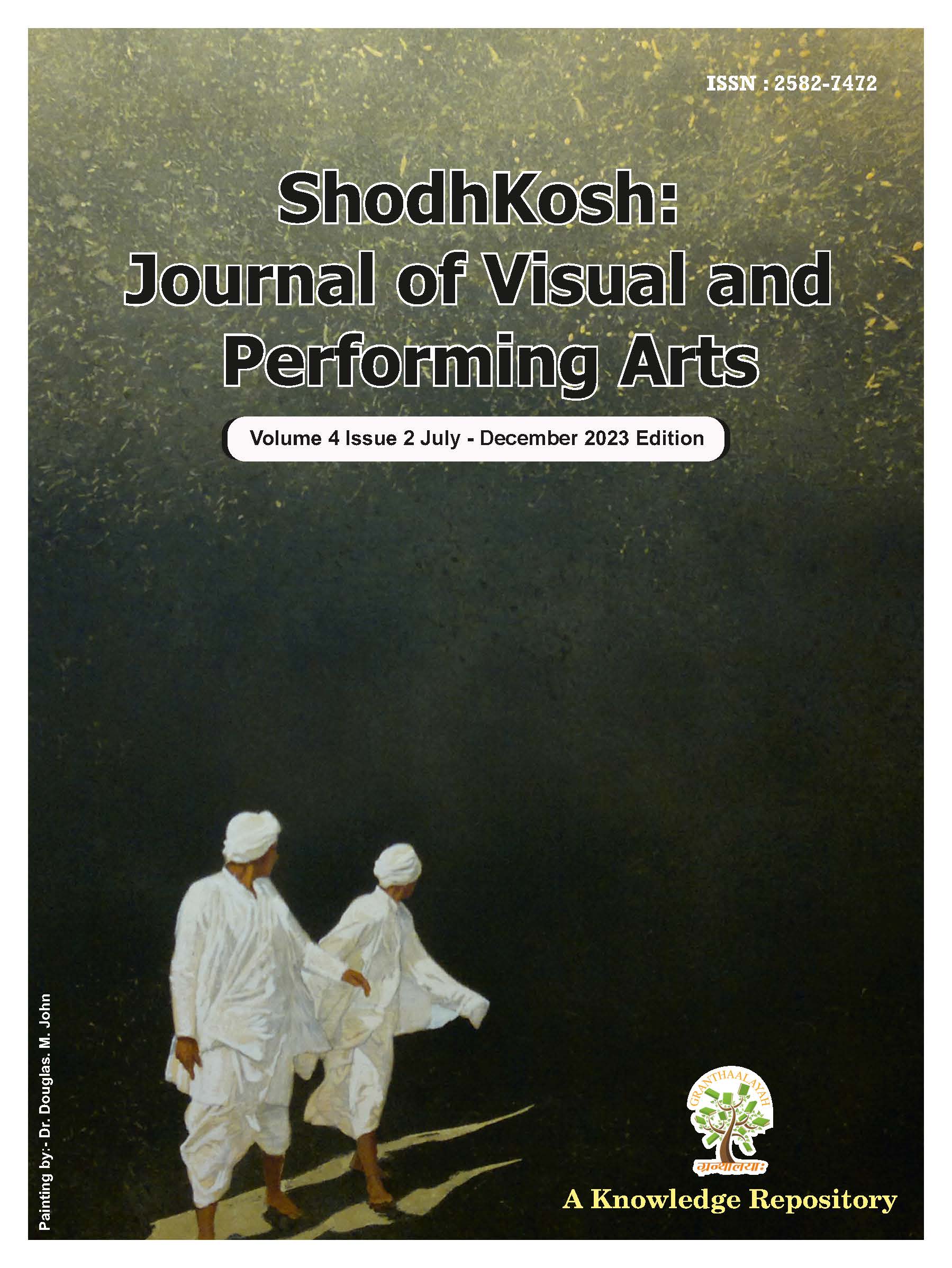ASSESSING THE SOCIO-ECONOMIC AND ENVIRONMENTAL IMPACTS OF MASS TOURISM ON MOUNTAINOUS REGIONS: A FRAMEWORK FOR SUSTAINABLE COMMUNITY DEVELOPMENT
DOI:
https://doi.org/10.29121/shodhkosh.v4.i2.2023.5306Keywords:
Mass Tourism, Mountain Communities, Sustainable Tourism, Socio-Economic Impacts, Environmental SustainabilityAbstract [English]
This article studies of the socio-economic and environmental consequences of approach tourism for mountain regions—as ultimately addressed instances, by means of the Himalayas, Alps and Rocky Mountains backdrop. Mass tourism has proven to be a double-edged sword for mountain communities, with the economic opportunities provided are enormous whilst the environmental and socio-cultural implications of mass tourism are often profound. It also has the direct and indirect impacts, including job creation and infrastructure development through economic benefits, as well as loss of cultural values, land degradation and depletion of resources.
It is based on a factor of multidisciplinary, using different data collection techniques those are quantitative and qualitative methods. It employs case studies from the Himalayas, Alps and Rockies, including a combination of surveys, interviews and secondary data. This study utilizes the Sustainable Livelihoods Framework (SLF), particularly focusing on how various capital assets—human, social, physical, financial and natural–interact with one another under tourism impacts. Additionally, Venn Diagrams and Bar Charts are used to visually present the impact scores of direct and indirect effects across the three case study regions, highlighting the complexities and variances in tourism's consequences.
Results shows that mass tourism has already been an engine for boosting local economies in mountain areas through job generation, raise of revenues and improvement of infrastructure but meanwhile is bringing severe environmental impacts like deforestation, biodiversity loss and water depletion. On a socio-cultural level, these destinations are dealing with phenomena like cultural commodification and demographic displacement, where tourism-oriented in-migration and the presence of temporary workers result in fluctuating permanent resident populations. Tourism is still identified as an important source of income, however reliance on this sector leaves them open to drastic changes in the number of holidaymakers arriving.
References
Butler, R. (2019). Tourism and climate change: Impacts and adaptation in mountain regions. Journal of Sustainable Tourism, 27(8), 1027-1045. https://doi.org/10.1080/09669582.2019.1622337
Duglio, S., & Letey, M. (2023). Tourism dependency and resilience in mountain communities: Case studies from the Andes. Journal of Mountain Tourism, 15(3), 245-268. https://doi.org/10.1007/s40452-023-00333-3
FAO, UNWTO, & Mountain Partnership. (2023). Tourism’s potential for mountain ecosystems and communities outlined in new report. United Nations World Tourism Organization.
Gohori, O., & van der Merwe, P. (2020). Towards a tourism and community-development framework: An African perspective. Sustainability, 12(13), 5305. https://doi.org/10.3390/su12135305 DOI: https://doi.org/10.3390/su12135305
Laeis, G. C. M., & Lemke, S. (2016). Social entrepreneurship in tourism: Applying sustainable livelihoods approaches. International Journal of Contemporary Hospitality Management, 28(6), 1076-1093. https://doi.org/10.1108/IJCHM-05-2014-0235 DOI: https://doi.org/10.1108/IJCHM-05-2014-0235
Nepal, S. K. (2020). Tourism and biodiversity in the Himalayas. Mountain Research and Development, 40(1), 3-12. https://doi.org/10.1659/MRD-JOURNAL-D-19-00024.1
Nepal, S. K., & Chipeniuk, R. (2018). Mountain tourism in transition: Pathways to sustainability. Annals of Tourism Research, 69(3), 445-455. https://doi.org/10.1016/j.annals.2018.03.001 DOI: https://doi.org/10.1016/j.annals.2018.03.001
Nepal, S. K., & Chipeniuk, R. (2021)."Mountain tourism and sustainable development: Current state and future needs." Sustainability, 13(9), 4852. https://doi.org/10.3390/su13094852 DOI: https://doi.org/10.3390/su13094852
Richards, G., & Hall, C. M. (2022)."Tourism and sustainable resource management in fragile ecosystems: A case study of the Alps." Tourism Management Perspectives, 45, 101314. https://doi.org/10.1016/j.tmp.2022.101314
Richards, G., & Hall, D. (2018). Tourism and sustainable development in mountain regions: Case studies and perspectives. New York: Routledge.
Richards, G., & Hall, D. (2022). Tourism, culture, and development in mountain regions. International Journal of Tourism Research, 24(4), 409-427. https://doi.org/10.1002/jtr.2478
Sharma, R., & Nepal, R. (2023)."Analyzing tourism’s socio-economic and environmental impacts in the Himalayas: A systematic review." Ecological Economics, 202, 107573. https://doi.org/10.1016/j.ecolecon.2023.107573
Sharma, R., & Nepal, S. K. (2021). Environmental and socio-economic impacts of tourism in the Himalayas. Sustainable Tourism Studies, 18(5), 321-335. https://doi.org/10.1016/j.jes.2021.10.017 DOI: https://doi.org/10.1016/j.jes.2021.10.017
Shoeb-Ur-Rahman, M., Simmons, D. G., Shone, M., & Ratna, N. (2020). Co-management of capitals for community wellbeing and sustainable tourism development: A conceptual framework. Tourism Planning & Development, 17(2), 225-245. https://doi.org/10.1080/21568316.2019.1675811 DOI: https://doi.org/10.1080/21568316.2019.1600161
Smith, M., & Richards, G. (2022). Tourism, culture, and development in mountain regions. International Journal of Tourism Research, 24(4), 409-427. https://doi.org/10.1002/jtr.2478 DOI: https://doi.org/10.1002/jtr.2478
Smith, M., & Richards, G. (2023)."Environmental footprints of mountain tourism: A comparative study of the Rockies, Himalayas, and Alps." Journal of Mountain Science, 20(3), 349-366. https://doi.org/10.1007/s11629-023-7865-y
UNWTO. (2021). Tourism for inclusive growth: UNWTO annual report. United Nations World Tourism Organization.
Williams, P., & Stewart, M. (2024) "Adaptation strategies for climate-resilient tourism in mountainous regions." Climate and Tourism Journal, 15(1), 85-102. https://doi.org/10.1016/j.climtour.2024.015
Xue, L., & Kerstetter, D. (2019). Rural tourism and livelihood change: An emic perspective. Journal of Hospitality & Tourism Research, 43(3), 416-432. https://doi.org/10.1177/1096348018782179 DOI: https://doi.org/10.1177/1096348018807289
Yu, P., Zhang, J., Wang, Y., Wang, C., & Zhang, H. (2020). Can tourism development enhance livelihood capitals of rural households? Evidence from Huangshan National Park adjacent communities, China. Science of The Total Environment, 748, 141099. https://doi.org/10.1016/j.scitotenv.2020.141099 DOI: https://doi.org/10.1016/j.scitotenv.2020.141099
Downloads
Published
How to Cite
Issue
Section
License
Copyright (c) 2023 Sagar Bhatt, Dr. Rakesh Dani

This work is licensed under a Creative Commons Attribution 4.0 International License.
With the licence CC-BY, authors retain the copyright, allowing anyone to download, reuse, re-print, modify, distribute, and/or copy their contribution. The work must be properly attributed to its author.
It is not necessary to ask for further permission from the author or journal board.
This journal provides immediate open access to its content on the principle that making research freely available to the public supports a greater global exchange of knowledge.































